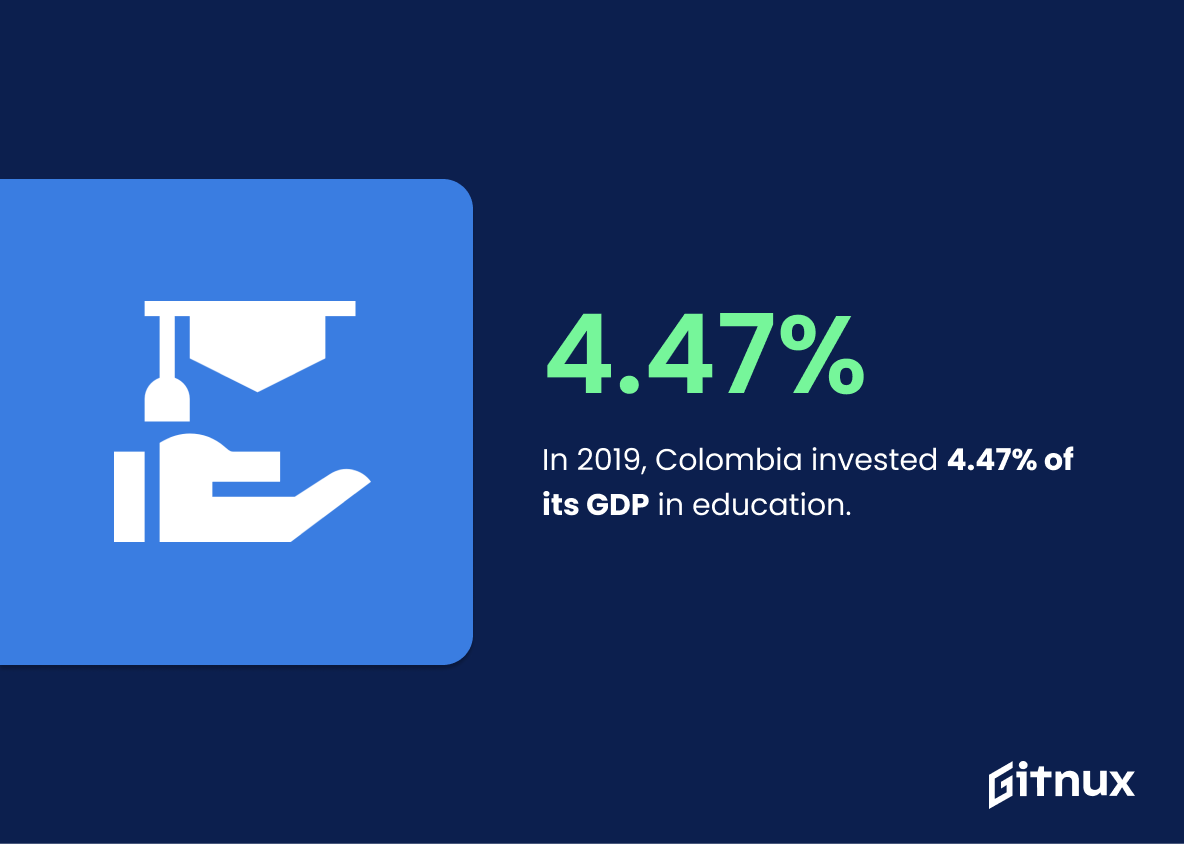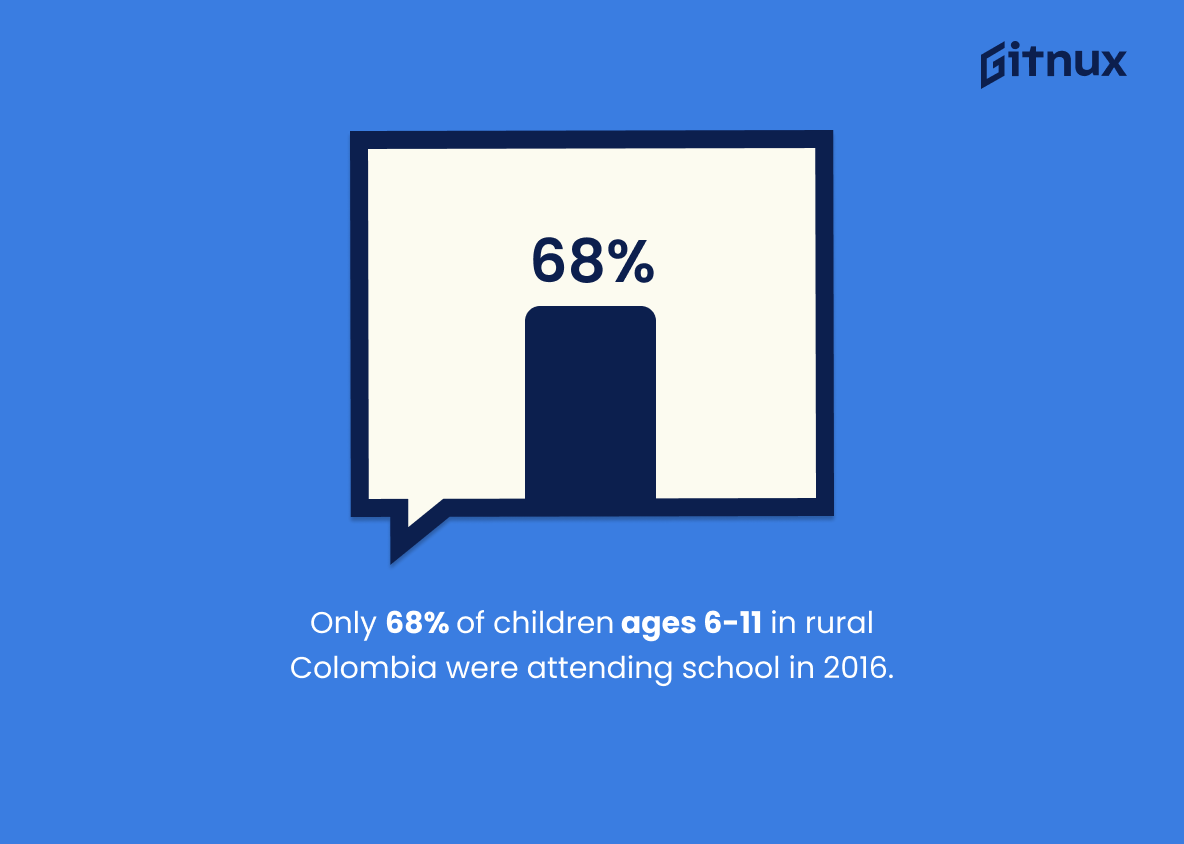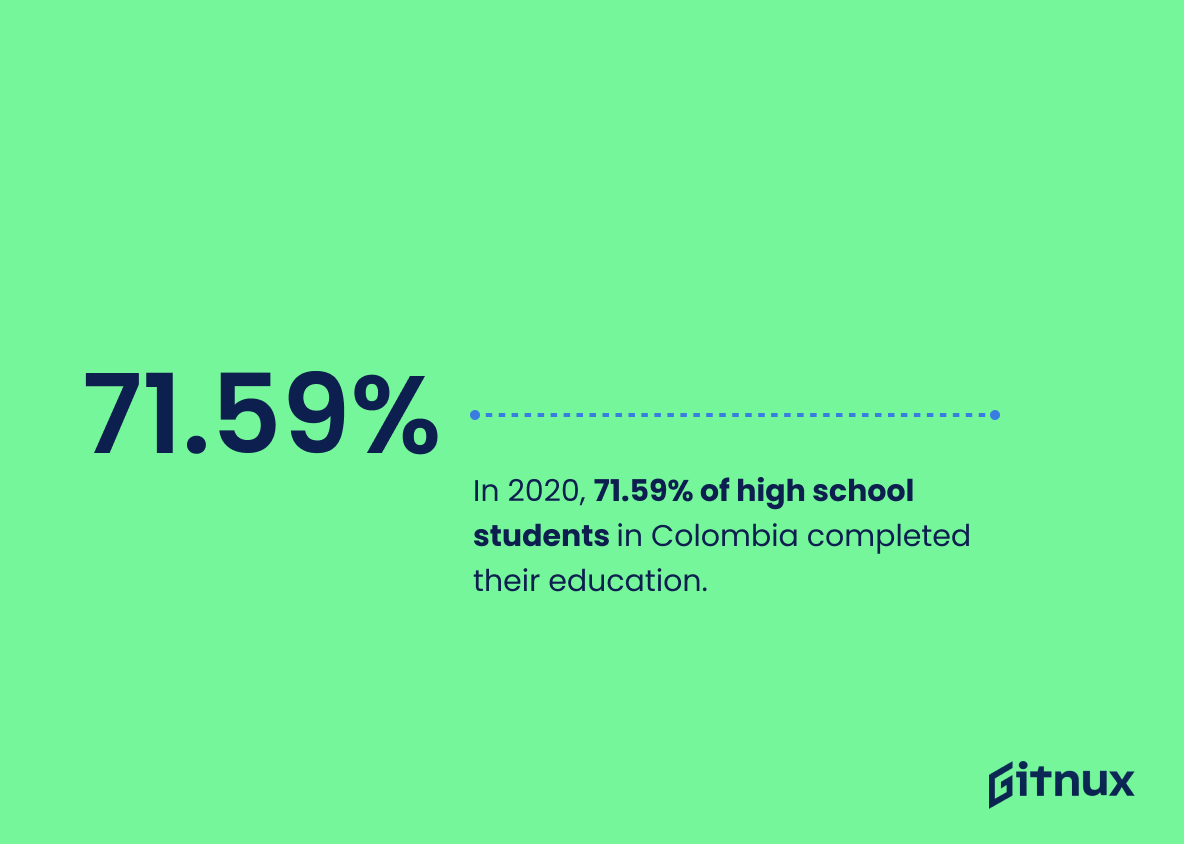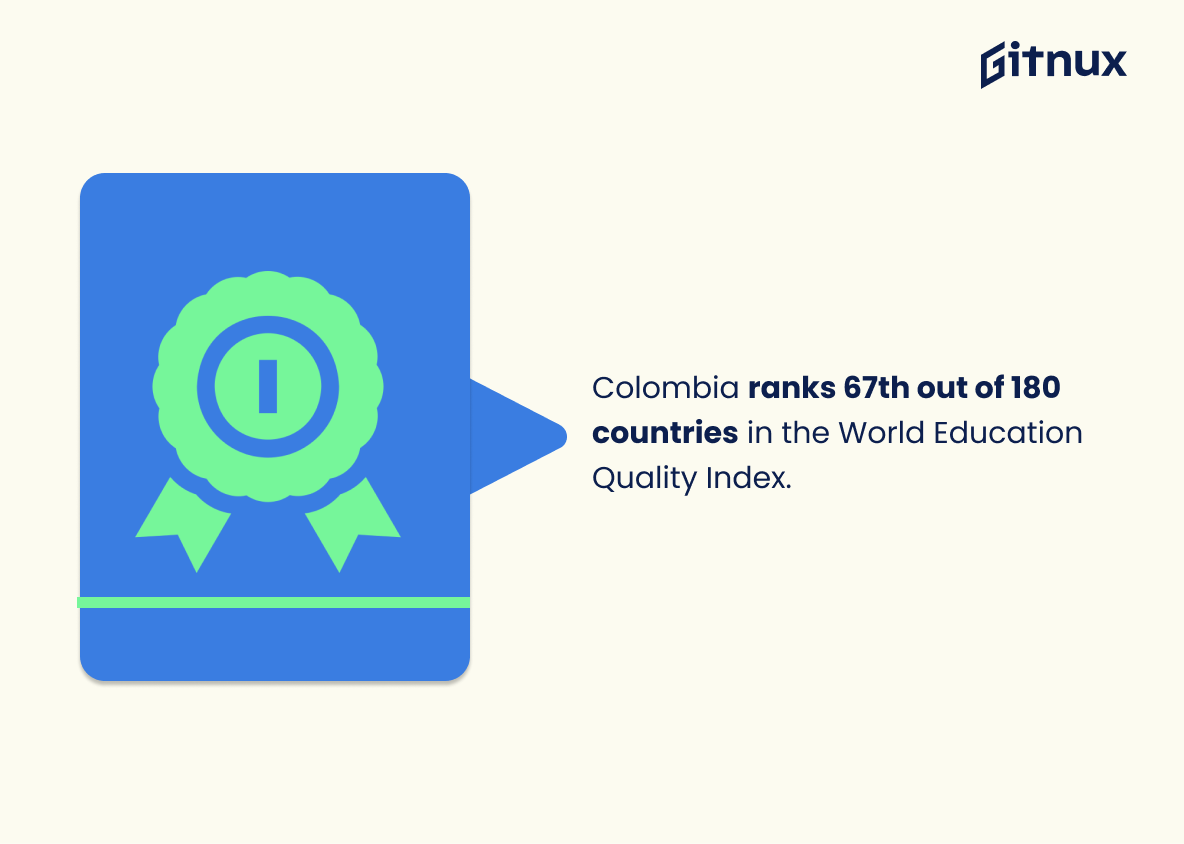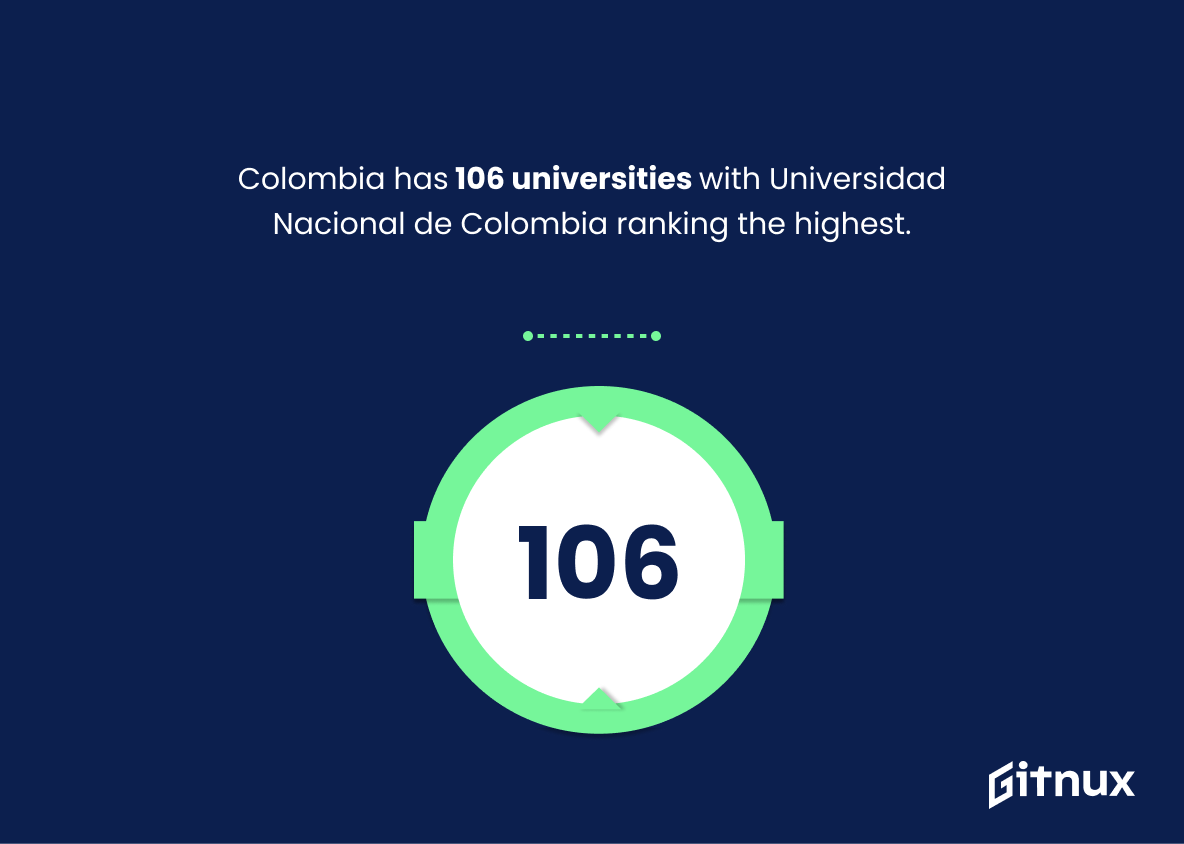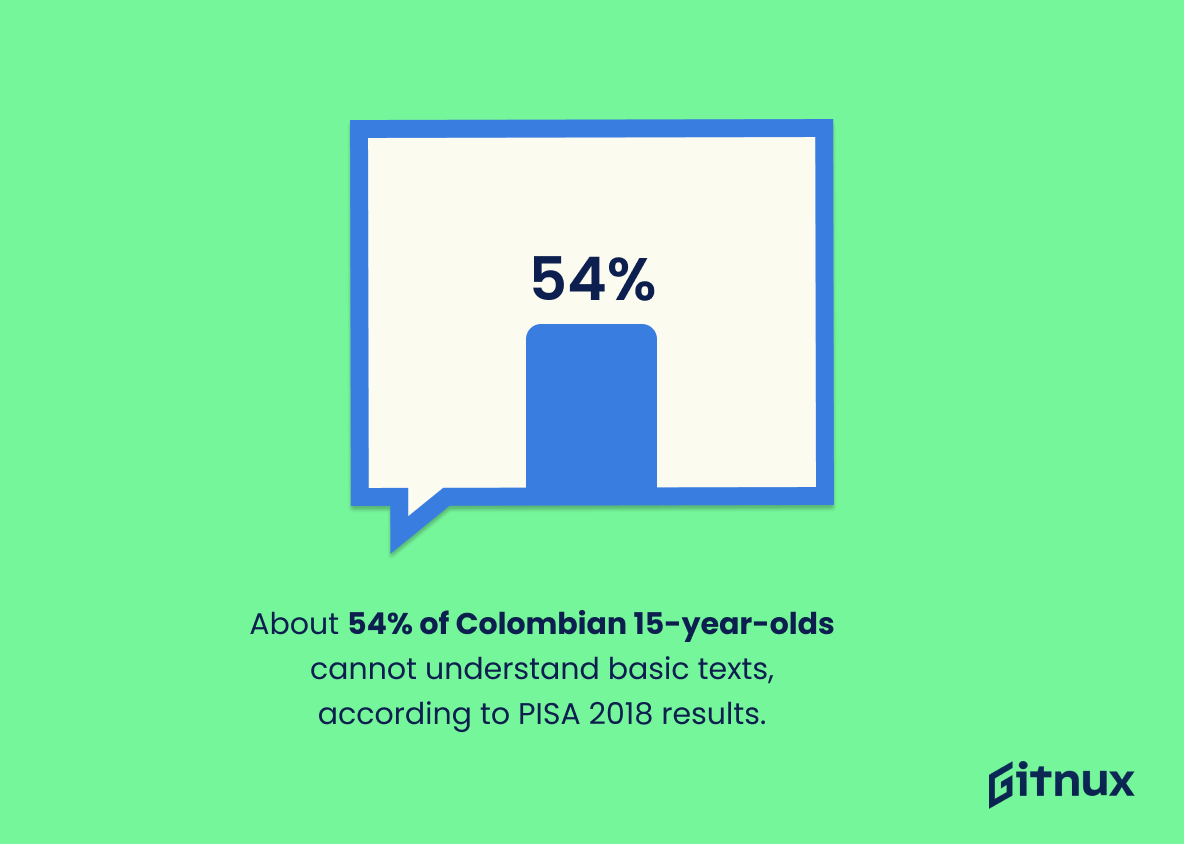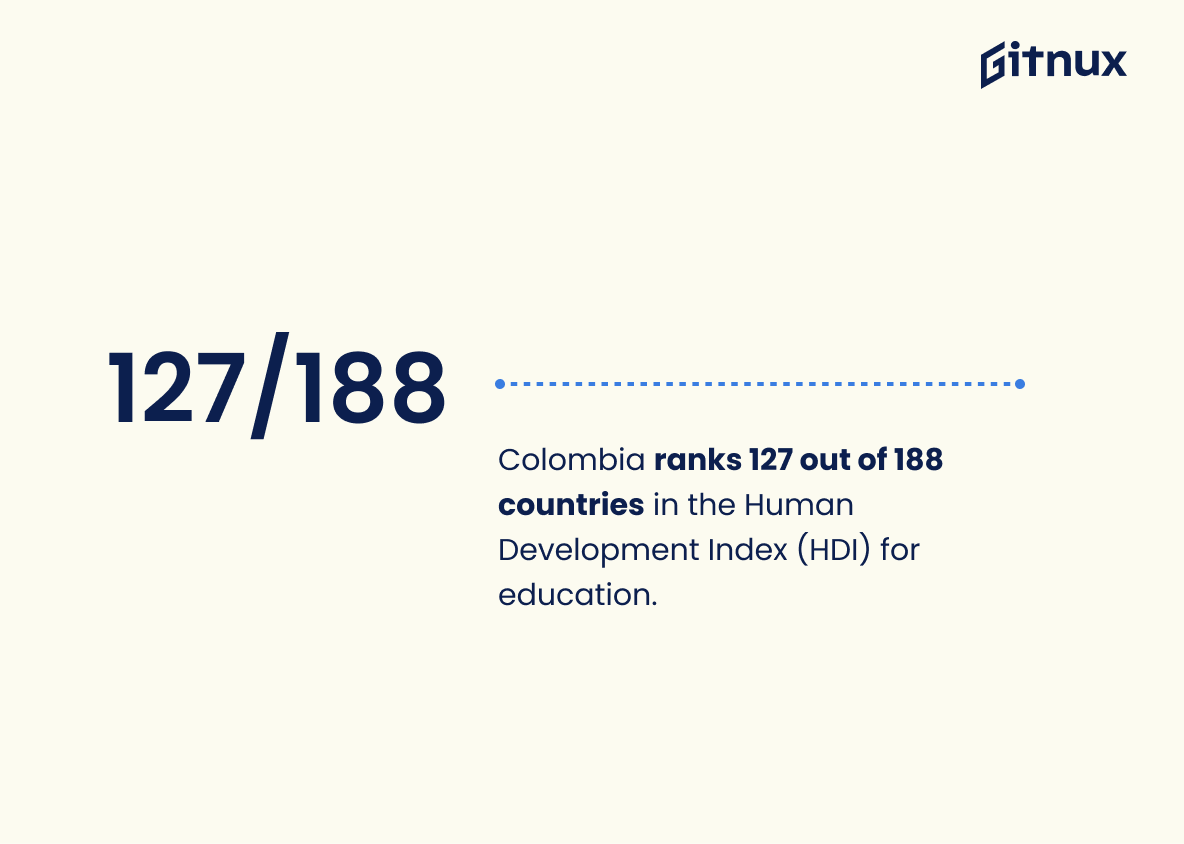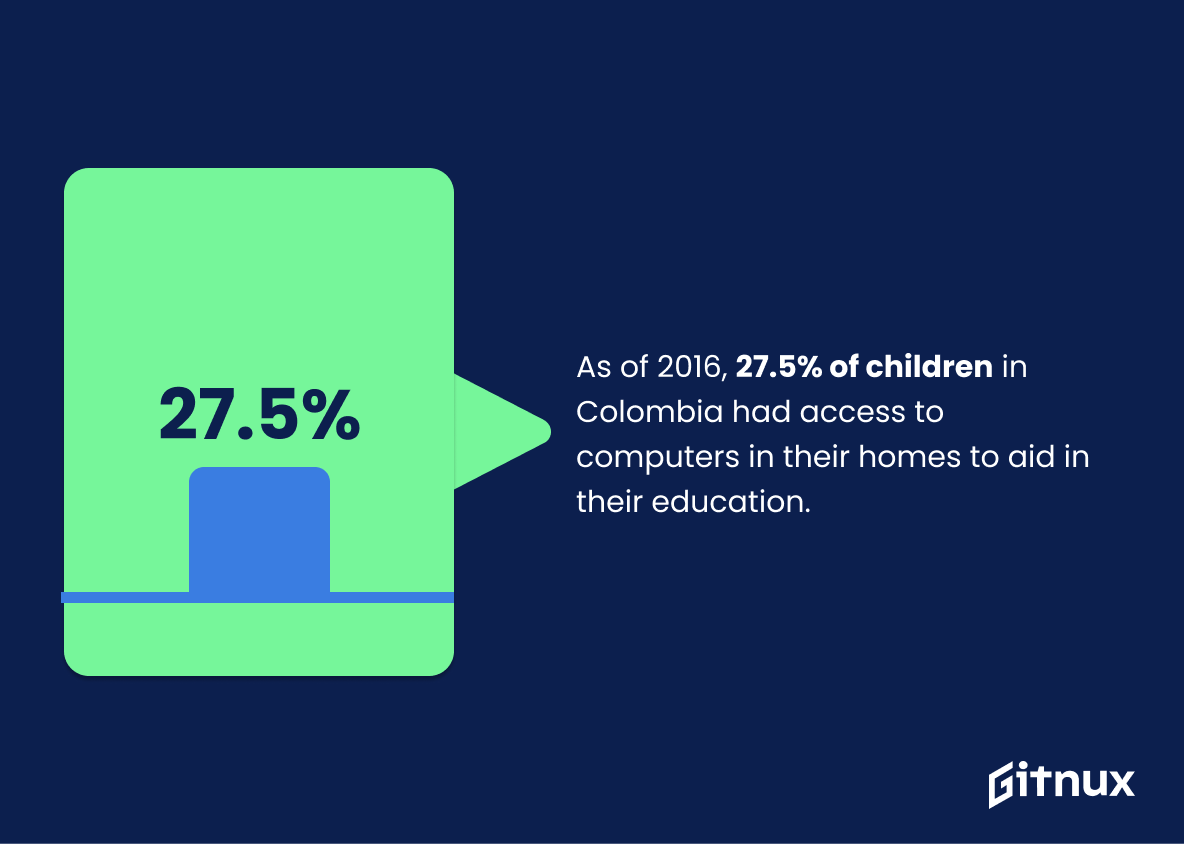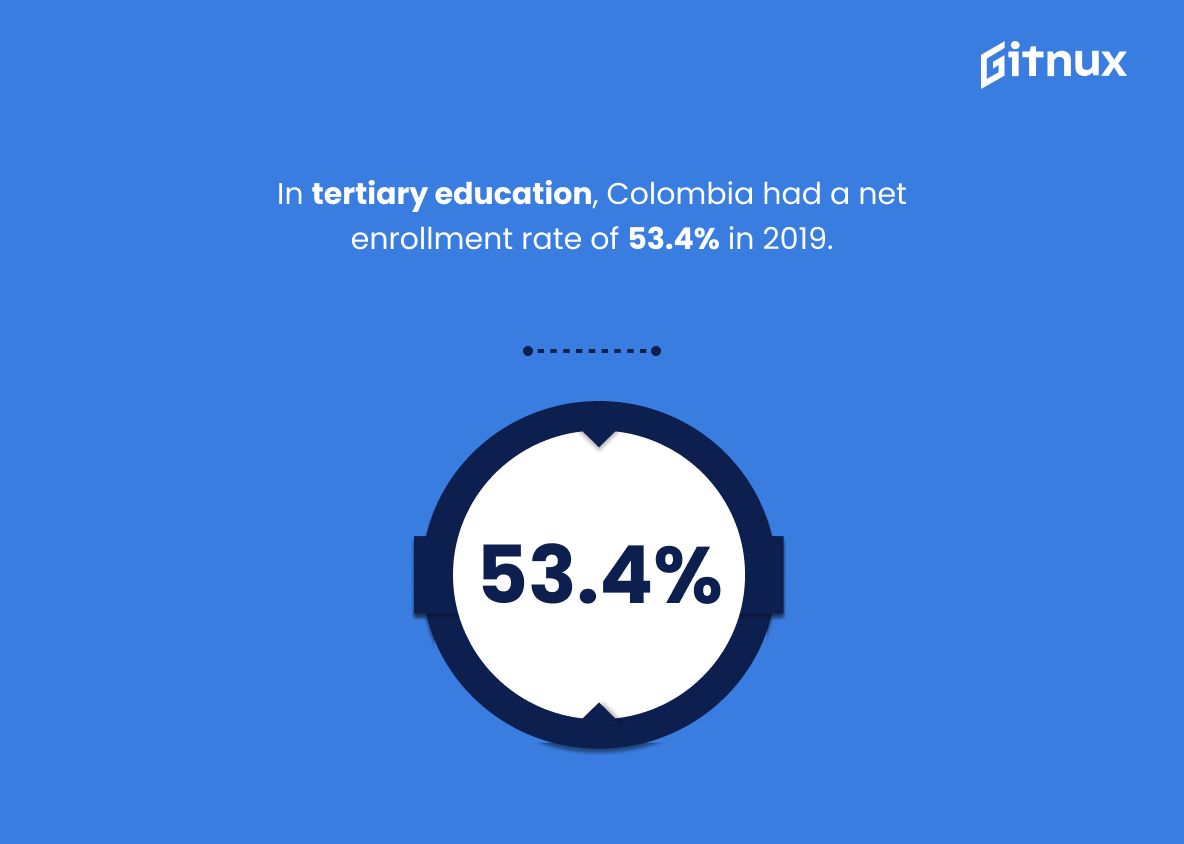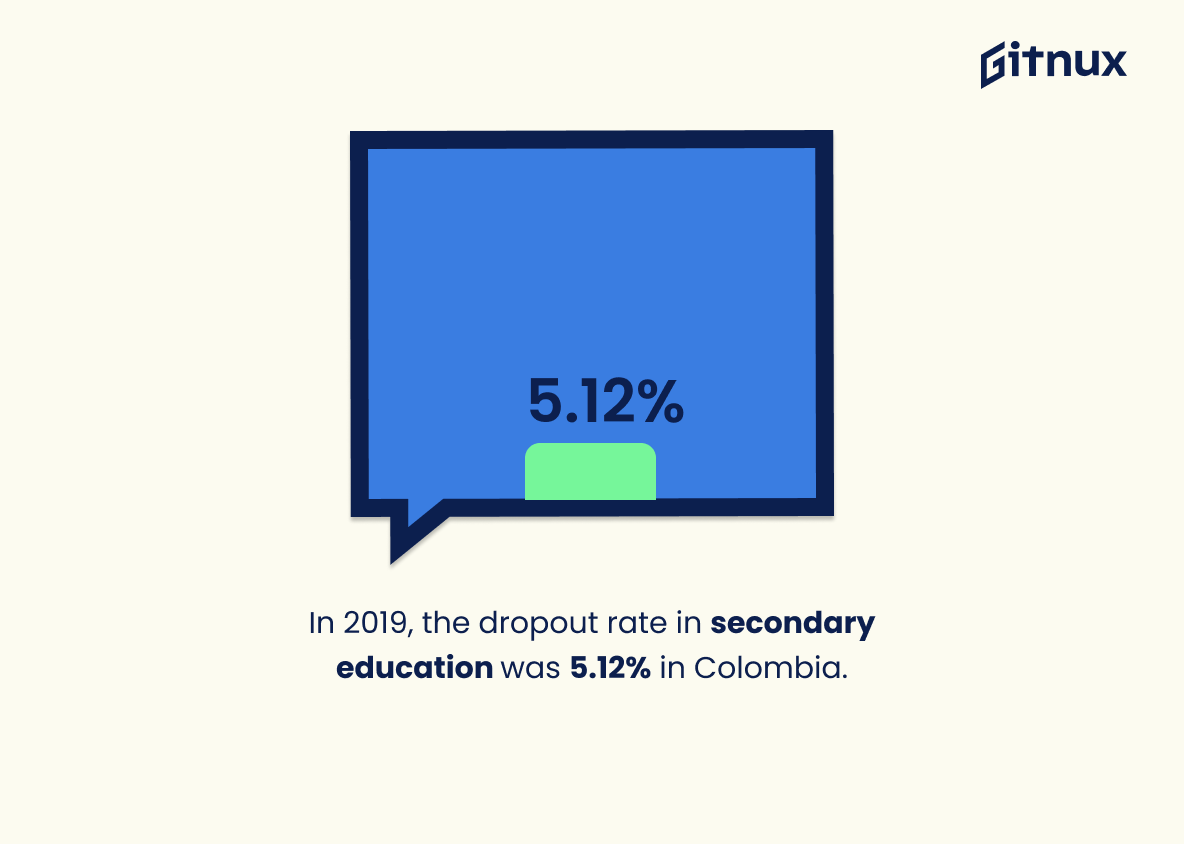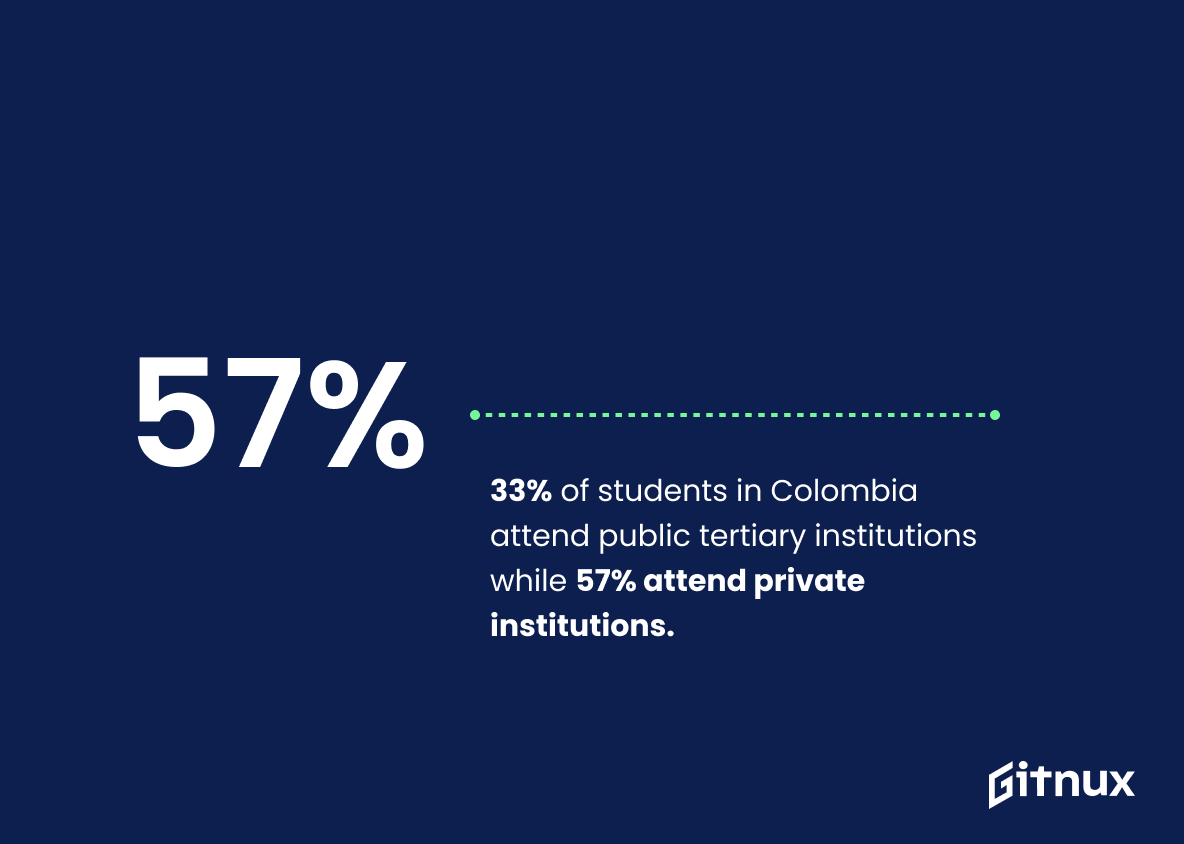Colombia is a country with an impressive education system. According to the World Bank, 93.4% of Colombian adults aged 15 and above are literate, while Colombia’s gross enrollment ratio in pre-primary education stands at 78.6%. In 2019, Colombia invested 4.47% of its GDP in education and the average teacher’s salary was $827 per month that year.
However, there are still some areas where improvement can be made; only 68% of children ages 6-11 in rural Colombia were attending school in 2016 and 71.59% of high school students completed their studies last year (2020). Additionally, according to Numbeo’s 2021 Quality Of Life Index rankings by country report, Colombia ranks 67th out 18 countries for educational quality – indicating room for growth within this sector as well.
In terms of tertiary level statistics: 18 percent women and 14 percent men have completed tertiary education; 106 universities exist across the nation with Universidad Nacional de Columbia ranking highest among them; 27.5 percent had access to computers at home for educational purposes back in 2016; 53 .4 net enrollment rate was recorded last year (2019); 7 .6 years is the average number spent on schooling ;15 .4 public expenditure accounted for total government spending 2018 ; 5 .12 dropout rate from secondary schools reported same time frame , 33 % attend public institutions 57 private ones respectively.. Finally 2020 saw 56 9 % gross enrolment rates higher than ever before .
These facts demonstrate both how far Colombians have come when it comes to improving their overall standard of living through increased access to quality learning opportunities but also highlight potential areas which could benefit from further investment or reform if they wish continue developing into one world’s leading nations when it comes providing citizens with top notch educations systems
Colombia Education Statistics Overview
In 2019, Colombia invested 4.47% of its GDP in education.
This statistic is a telling indication of the importance Colombia places on education. By investing 4.47% of its GDP in education, Colombia is demonstrating its commitment to providing its citizens with the resources and opportunities they need to succeed. This investment is a clear sign that Colombia is dedicated to improving its educational system and providing its citizens with the tools they need to reach their full potential.
Only 68% of children ages 6-11 in rural Colombia were attending school in 2016.
This statistic is a stark reminder of the educational disparities that exist in rural Colombia. It highlights the fact that a significant portion of children in rural areas are not receiving the education they need and deserve. This lack of access to education can have a long-term impact on the economic and social development of the country, and it is an issue that needs to be addressed.
In 2020, 71.59% of high school students in Colombia completed their education.
This statistic is a testament to the success of Colombia’s educational system, showing that the majority of high school students are able to complete their education. It is a positive indicator of the country’s commitment to providing quality education to its citizens, and a sign of progress in the nation’s educational system.
Colombia ranks 67th out of 180 countries in the World Education Quality Index.
This statistic is a testament to the progress Colombia has made in the realm of education. Ranking 67th out of 180 countries in the World Education Quality Index is a remarkable achievement, and speaks to the dedication of the Colombian people to providing quality education to their citizens.
Colombia has 106 universities with Universidad Nacional de Colombia ranking the highest.
This statistic is a testament to the educational opportunities available in Colombia. With 106 universities, students have a wide range of options to choose from when pursuing higher education. Furthermore, the fact that Universidad Nacional de Colombia is the highest-ranking university in the country speaks to the quality of education available in Colombia.
In 2019, net enrollment rate in primary education for Colombia was 86.7%.
The net enrollment rate in primary education for Colombia in 2019 was an impressive 86.7%, indicating that a large majority of children in the country are receiving a basic education. This is an encouraging sign for the future of Colombia, as it suggests that the country is making progress in providing educational opportunities to its citizens. This statistic is a testament to the hard work of the Colombian government and its commitment to improving the educational system in the country.
About 54% of Colombian 15-year-olds cannot understand basic texts, according to PISA 2018 results.
This statistic is a stark reminder of the educational disparities that exist in Colombia. It highlights the need for more resources and attention to be devoted to improving the literacy skills of 15-year-olds in the country. It is a call to action for the government and other stakeholders to take steps to ensure that all Colombian students have access to quality education and the opportunity to reach their full potential.
Colombia ranks 127 out of 188 countries in the Human Development Index (HDI) for education.
This statistic is a stark reminder of the educational disparities that exist in Colombia. It highlights the need for greater investment in education in order to improve the quality of life for its citizens. It also serves as a call to action for those in positions of power to take steps to ensure that all Colombians have access to quality education.
As of 2016, 27.5% of children in Colombia had access to computers in their homes to aid in their education.
This statistic is a telling indication of the educational opportunities available to children in Colombia. It highlights the fact that access to computers in the home can be a major factor in a child’s educational success. With 27.5% of children having access to computers, it is clear that there is still a large gap in the availability of technology for educational purposes in Colombia. This statistic is an important reminder that there is still much work to be done in order to ensure that all children in Colombia have access to the resources they need to succeed in their education.
In tertiary education, Colombia had a net enrollment rate of 53.4% in 2019.
The net enrollment rate of 53.4% in 2019 for Colombia’s tertiary education system is a telling statistic that speaks volumes about the country’s commitment to education. It shows that Colombia is making strides in providing access to higher education, and that the country is investing in its future generations. This statistic is an important indicator of the progress Colombia is making in its educational system, and is a key factor in understanding the overall state of education in the country.
The average number of years of schooling in Colombia is 7.6 years.
This statistic is a telling indication of the educational landscape in Colombia. It provides a snapshot of the educational opportunities available to the people of Colombia, and serves as a benchmark for measuring the progress of educational initiatives in the country. It is an important statistic to consider when discussing the state of education in Colombia.
In 2019, the dropout rate in secondary education was 5.12% in Colombia.
This statistic is a telling indication of the state of secondary education in Colombia. It speaks to the number of students who are not completing their education, which can have a lasting impact on the country’s economic and social development. By understanding the dropout rate, we can better understand the challenges that Colombia faces in providing quality education to its citizens.
33% of students in Colombia attend public tertiary institutions while 57% attend private institutions.
This statistic is a telling indication of the state of education in Colombia. It reveals that the majority of students are attending private institutions, suggesting that public tertiary institutions may not be providing the quality of education that students are seeking. This could be due to a lack of resources or inadequate funding, and it is an issue that needs to be addressed in order to ensure that all students have access to quality education.
The 2018 gross tertiary enrollment rate in Colombia was 56.9%.
The 2018 gross tertiary enrollment rate in Colombia is a telling statistic that speaks volumes about the state of education in the country. It indicates that more than half of the population is taking advantage of the opportunity to pursue higher education, which is a positive sign for the future of Colombia. This statistic is a testament to the commitment of the Colombian government to providing quality education to its citizens, and it is a key indicator of the progress that has been made in the country’s educational system.
Conclusion
From the data presented, it is clear that Colombia has made significant progress in its education system. The literacy rate of 93.4% among adults aged 15 and above indicates a high level of access to basic education for Colombians. Additionally, 78.6% gross enrollment ratio in pre-primary education shows an increased focus on early childhood development and learning opportunities for young children across the country. Furthermore, with 4.47% GDP investment in 2019 as well as higher salaries for teachers compared to other countries ($827 per month), there are more resources available to support quality teaching and learning experiences at all levels of schooling from primary through tertiary institutions both public (33%) and private (57%).
Despite these positive developments, disparities remain between rural areas where only 68% of 6-11 year olds attend school compared to urban centers; this gap must be addressed if Colombia wants to continue improving their educational outcomes overall which currently rank 67th out of 180 countries according World Education Quality Index rankings while also having one 106 universities led by Universidad Nacional de Colombia ranking highest amongst them all..
References
0. – https://www.hdr.undp.org
1. – https://www.data.worldbank.org
2. – https://www.databank.worldbank.org
3. – https://www.ourworldindata.org
4. – https://www.savethechildren.org.uk
5. – https://www.globalpartnership.org
6. – https://www.mineducacion.gov.co
7. – https://www.icef.com
8. – https://www.numbeo.com
9. – https://www.knoema.com
10. – https://www.gpseducation.oecd.org
11. – https://www.topuniversities.com
12. – https://www.worldbank.org
